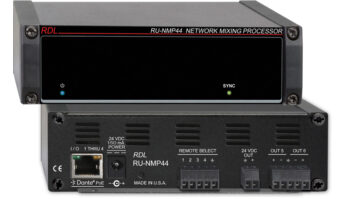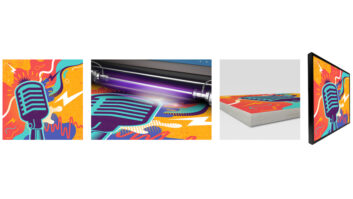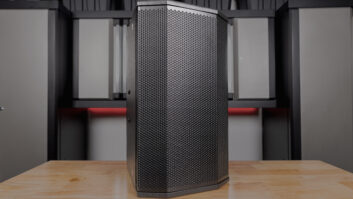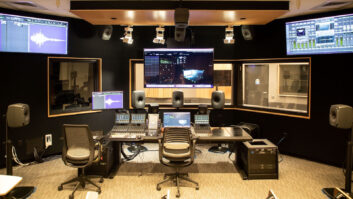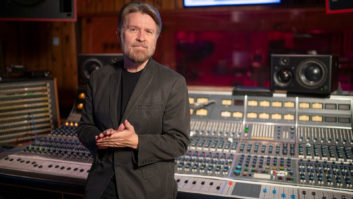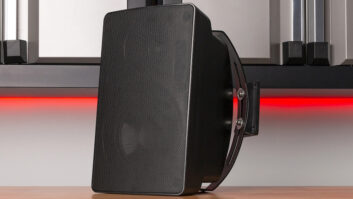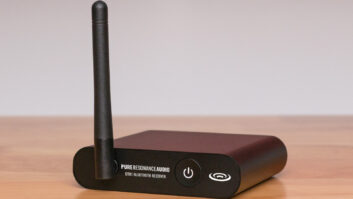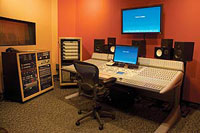
Studio designers, equipment providers and contractors know as well as instructors do that audio education is big business. Every year, we see more schools open, and existing programs add new and upgraded recording studios. Here, we take a look at some of the new studio facilities to come online within schools. For Mix‘s comprehensive directory of North American audio education programs, visit www.mixonline.com.
Photo: Rob Jaczko
Berklee College of Music
The redesigned Studio C at Berklee College of Music (Boston, www.berklee.edu) features a new 32-fader Digidesign ICON console with XMON monitor section. The studio is used for the college’s Mix Techniques II course, which focuses on in-the-box Pro Tools-based mixing methods, as well as for classes in Post-Production, Remixing of Records; Music and Sound Production for Games; and Vocal Production. Also installed as part of the redesign were Dynaudio surround monitors (BM6As with BM12 sub). Stereo monitoring is via Genelec 1031s and Yamaha NS-10s. The acoustical redesign by college staff includes treatments by RPG and Auralex.

McNally Smith College
McNally Smith College of Music (St. Paul, Minn.; www.mcnallysmith.edu) refurbished two main control rooms that serve music technology students. Studios 1 and 2 now have matching 48-input SSL Duality consoles, Pro Tools HD2 systems and Studer 827 2-inch machines. New acoustic treatments were designed by acoustics instructor Thomas Day and his students. McNally Smith houses five additional commercial-level studios and two smaller project rooms. Bryan Forrester, the school’s chair of music technology, says that students in his program begin their studies using Trident 80B analog boards and 2-inch machines to gain “a deeper understanding of signal flow” before working in the Duality rooms.

The Art Institutes
The Walters-Storyk Design group designed new audio facilities within two of the Art Institutes’ (www.artinstitutes.edu) 40 North American campuses. The first is a 1,200-square-foot facility within the Art Institute of Washington (Washington, D.C.), including a 500-square-foot live room and a 350-square-foot control room (pictured, left) centered around an SSL AWS 900 console and Dynaudio and Genelec monitoring systems, as well as a sound lock, iso booth and machine/storage room.
The second studio (right) was designed for the Art Institute of Nashville and features an SSL Duality console and Dynaudio AIR 15 surround monitors. Both rooms were designed to accommodate small-class instruction in audio production and post-production, as well as individual student projects. WSDG is also slated to design new studios for the Art Institutes of Austin, Texas, and San Diego, Calif.

Photo: Emma Freeman Photography
Ex’pression College for Digital Arts
Artist/producer Alan Parsons was on hand this past July for the ribbon-cutting ceremony celebrating the opening of Ex’pression’s (Emeryville, Calif.; www.expression.edu) Alan Parsons Studio Two. The studio was conceived as a hybrid recording/mixing/mastering room, and is centered around a Pro Tools HD3 system with C|24 control surface. Monitoring is via ATC SCM150ASMs. The studio also features an impressive collection of outboard gear, such as Chandler and Neve mic pre’s, Manley EQs, mic and line mixers, API 550A 3-band EQs and 525 compressors, and more.

Photo: David Greenspan
Duderstadt Center, University of Michigan
The Duderstadt Center at the University of Michigan (Ann Arbor, www.music.umich.edu) offers an electronic music studio, a digital media tools lab, a virtual reality “cave,” multimedia rooms and a recently overhauled recording studio, which includes this control room, plus a tracking room, two iso booths and an amp room. At the heart of the WSDG renovation is a 48-channel API Vision console that lets students mix in stereo and surround simultaneously. The flexible control room is equipped with variable wall panels, a movable producer’s desk and a large selection of outboard gear. Any member of the university community can be certified to use the studio by taking a multiweek course after having using the Electronic Music Studio for one semester.
